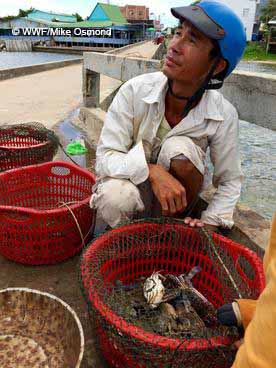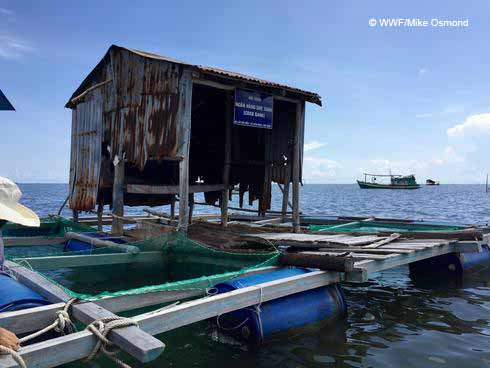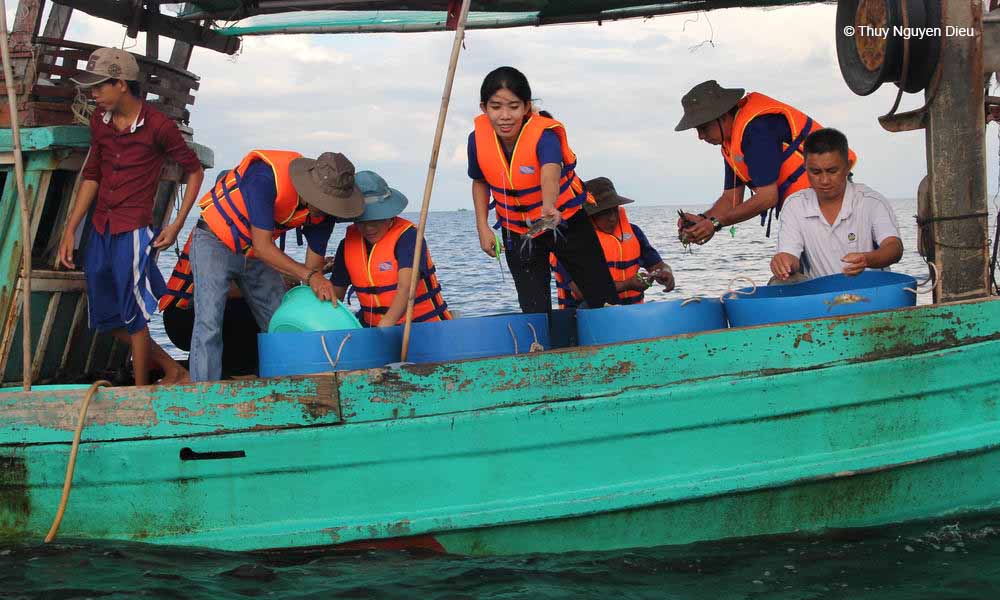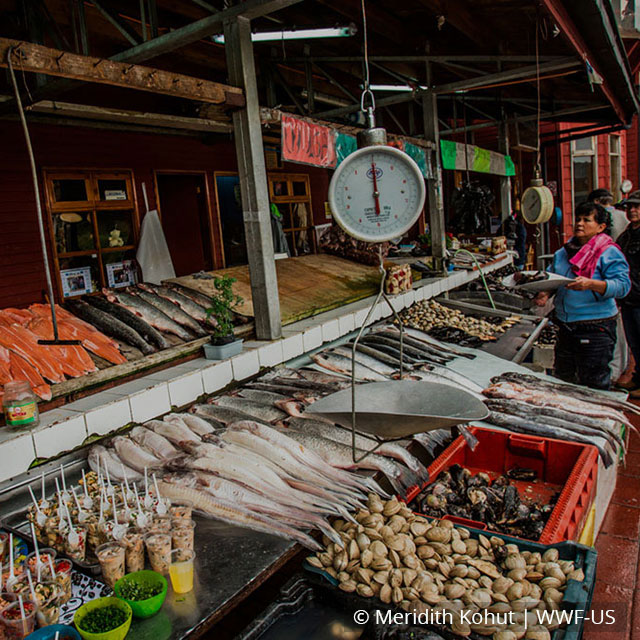Kien Giang province is nestled in the southwest of Vietnam, featuring a prominent coastline along the Gulf of Thailand. Here in these tepid waters lives the blue swimming crab, a crustacean with an olive-green body and front claws the color of the sky on a clear day.
Many locals rely on fishing for these crabs as a source of income. But, as one fisher noted, it’s grown more and more difficult to earn a living this way in recent years. As international demand for the meat from this crab grows, so too does the number of box trap and bottom-gillnet fishers swooping into the region from other provinces to get a share of the profit. And without proper regulations and detailed data, overharvesting the crab population is a very real threat.
 That’s why WWF teamed up with local governments, producers and exporters, and fishers to protect and improve the blue swimming crab stock in Kien Giang, and get their fishery certified as sustainable.
That’s why WWF teamed up with local governments, producers and exporters, and fishers to protect and improve the blue swimming crab stock in Kien Giang, and get their fishery certified as sustainable.
More than 20,000 people in Kien Giang rely on the blue swimming crab fisheries to support their families. It’s an essential source of income in a region with limited livelihood alternatives, so the fishery must stay both healthy and competitive.
Meat from blue swimming crab is similar to that of the blue crab found in the Chesapeake Bay and Gulf of Mexico, and is in high demand in the United States, Japan, and parts of Europe. But that rising demand—particularly from a small, local fishery—could lead to over harvesting. The Kien Giang crab fishery is facing several critical issues along these lines: the harvest of undersized crab, a lack of knowledge of the health of the stock, and a need for better enforcement of fishing regulations.
In 2010, WWF began meeting with those involved in the fishery to develop a fishery improvement project (FIP) to address the problems. The idea is to make forward-looking changes to the fishery that will help it meet the standard of the Marine Stewardship Council (MSC), the world’s leading certification program for sustainable wild-caught fisheries.
The process makes sense for the Kien Giang because of the fishery’s simplicity: it focuses almost exclusively on a single species; it’s small in size with a single management authority; and it has an international market clamoring for sustainable products.
Making a fishery sustainable is not just valuable for the environment; it helps grow business. Many international seafood buyers are demanding sustainable products, particularly those with approval from MSC. Processors saw the value in certification early on, and made a financial commitment to make it happen.
“Our company buys blue swimming crabs from all over Vietnam but we found the quality of crab meat from Kien Giang is the best, qualified for the high markets like US or Europe,” said Trang Truong, purchase vice director of Yueh Chang Canned Foods company. “Therefore we also want to protect the source of material for our business here.”
 Fishers, too, understood such a project could help secure a prosperous future for their families, and for generations to come. Early on, these fishers participated in community meetings to understand the process and their role within it.
Fishers, too, understood such a project could help secure a prosperous future for their families, and for generations to come. Early on, these fishers participated in community meetings to understand the process and their role within it.
Giang Ngoc Ly, an old crab fisherman in Ha Tien district who spent his fishing life to catch blue swimming crab, understands well the value of the blue swimming crab to the local Kien Giang fishers. “Our grandparents have left this precious crab stock for us, we need to keep it for our children and grandchildren,” Giang said.
WWF plans to work with other coastal communities in Vietnam to set up similar sustainable fisheries.




